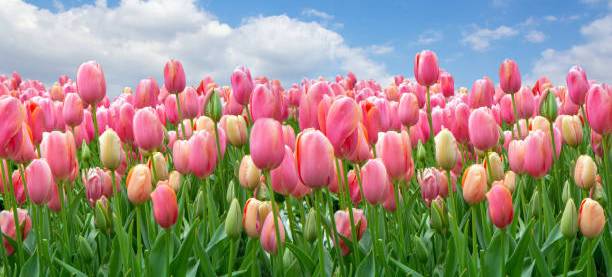Caring for spring-blooming bulbs after flowering

JACKSONVILLE, Ill. — Our days are getting longer and warmer, and many gardens are awash in color from spring-blooming bulbs like daffodils and tulips. Unfortunately, the blooms will eventually fade, leaving many of us wondering what we can do to help make sure that they are ready to go again next year.
Leave the leaves
The most important thing you can do to help your bulbs is to leave the foliage on the plants. The leaves are needed so the plants can photosynthesize and produce the food that the bulbs need to form flower buds for next year. If the foliage is removed or mowed too early, it can result in a smaller, weaker bulb that will gradually decline and die out.
Leave the foliage on the plants until it begins to yellow and dieback. It can then be removed because it will no longer produce food for the plants. For smaller bulbs like snowdrops and squill, this will happen relatively quickly. For larger plants, like tulips and daffodils, it can take several weeks for the foliage to die back on its own.
One problem with letting foliage remain is that it can become unsightly over time. In an attempt to make their gardens look tidier, many people will tie their foliage together to make it less noticeable. However, this is not recommended because doing this will reduce the amount of light the leaves can intercept, reducing the amount of photosynthesis, which leads to less energy produced by the plant. As an alternative, you can interplant annuals with your bulbs to help hide the foliage.
Deadhead your plants
While we don’t want to remove the leaves, it’s a good idea to remove spent flowers from plants to prevent the formation of seedpods. If plants are allowed to produce seeds, this will use energy that could otherwise be used for the bulbs and often result in smaller bulbs.
Fertilize your bulbs
Spring-blooming bulbs can be fertilized once they are done blooming. Look for a fertilizer high in phosphorous (middle number) and low in nitrogen (first number), such as a 5-10-5. Fertilizers are generally applied at 1-2 pounds per 100 square feet. Make sure to gently work or water the fertilizer into the soil.
Crowded plants and fewer blooms
After several years you may notice that your bulbs are producing smaller or fewer flowers. This often happens when they become crowded. Bulbs will often reproduce by division, where new ‘daughter’ bulbs form from the original ‘mother’ bulb, causing plants to become crowded. If this happens, bulbs can be dug and divided once the foliage has died back and the bulbs are dormant.
Carefully dig around the bulb cluster and lift it out of the soil. Separate bulbs and dispose of any that are damaged or soft. Bulbs can then be replanted immediately, or they can be dried and stored in a cool place to be planted in the fall.
Good Growing Tip of the Week: While they are usually discarded, you can try planting potted bulbs that were forced to bloom. Make sure they get plenty of sun and let the foliage die back naturally. Bulbs can then be planted once dormant or in the fall. The bulbs will likely only produce leaves the first year and then flower the second.
Miss Clipping Out Stories to Save for Later?
Click the Purchase Story button below to order a print of this story. We will print it for you on matte photo paper to keep forever.

